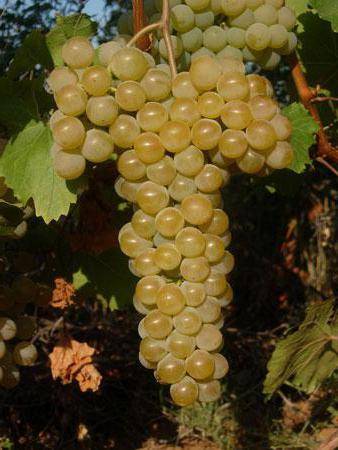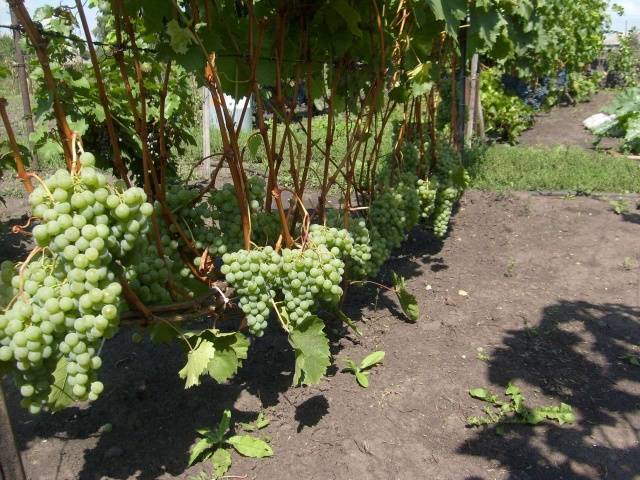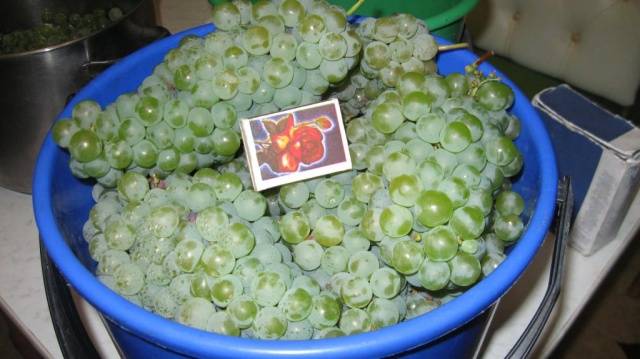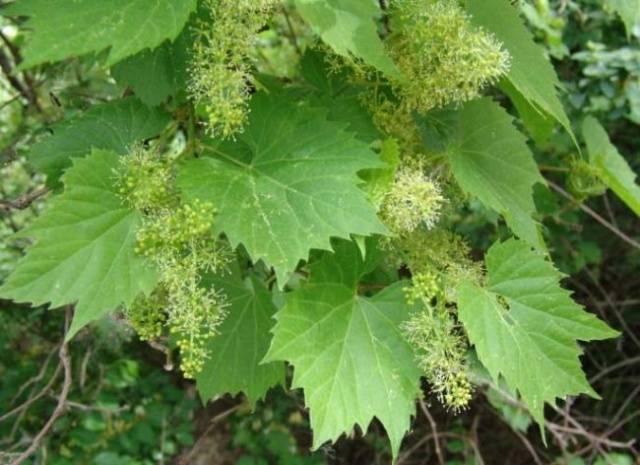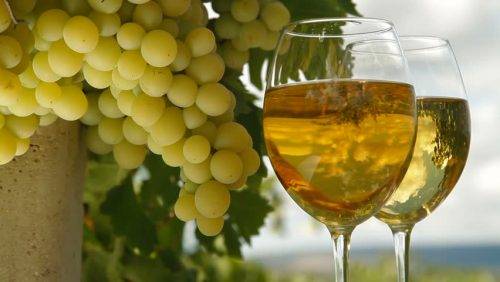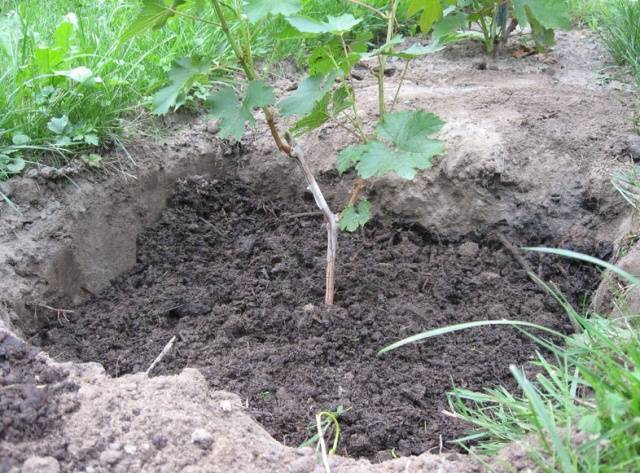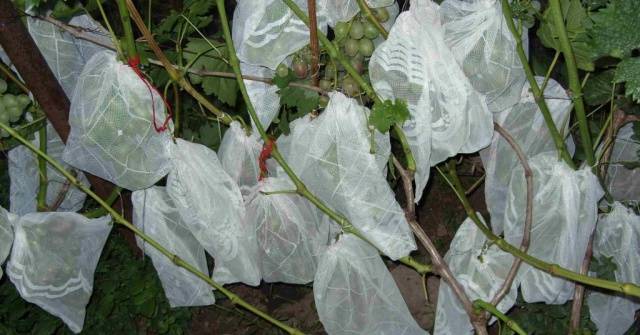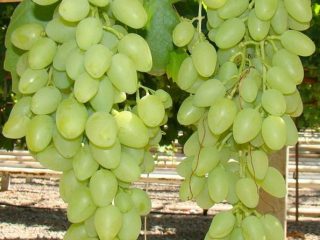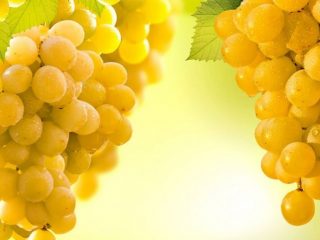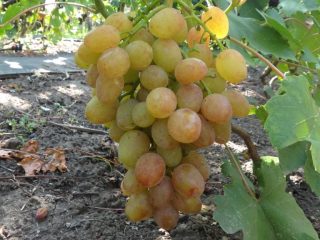Content
There are a great many varieties of grapes, including table and wine grapes, as well as universal ones. In our article we will talk about the variety from which delicious white wine is obtained - the Citron Magaracha grape. Although the berries themselves are no less tasty.
Citron Magaracha grapes (variety description, photos, reviews from gardeners are presented below) have attracted winegrowers from various regions of Russia in recent years. Many people are interested in whether it is possible to cultivate vines in risky farming areas. Let's try to sort this issue out.
Historical information
Citron Magaracha grapes of Russian origin. Gardeners need to thank the Crimean Institute of Wine and Grapes Magarach. In the 70s of the last century, scientists crossed two varieties - Madeleine Angevin, the technical breeding form Magarach 124-66-26 and the Novoukrainsky early table grape.
It took a long time to achieve the result; titanic work was done, but the effect pleased not only the creators, but also the gardeners. The new variety Citron Magaracha, according to the description, is completely true. The scale of its cultivation continues to increase to this day.
Since Crimea became part of Ukraine in the 1990s, the registration procedure was carried out in the new state. The variety has been approved for industrial cultivation in Ukraine since 2002.
Properties of the variety
Citron Magaracha is a grape variety for technical purposes. White aromatic wines of the highest quality are prepared from it.
Krasnodar region, Rostov region, Stavropol region and the North Caucasus are the regions where Citron grapes are grown on an industrial scale and on private plots.
Now let's move on to the description of the variety, and the photo will confirm our words.
Features of the bush
As a rule, the bushes are medium or vigorous. The leaves are medium-sized, rounded. They come with three or five blades. The upper surface of the leaf blade is smooth, and there are no hairs on the underside.
The flowers are bisexual; there is no need to plant pollinating grapes. Fruit set is almost 100%, so peas do not occur.
Bunches and berries
Conical or cylindroconical bunches have medium density. Weight from 300 to 400 grams. The berries are medium-sized, more round, weighing from 5 to 7 grams. The fruits are yellow or yellow-green with a whitish coating.
The skin is dense, but not thick. The berries themselves are juicy with a harmonious, pronounced taste of nutmeg and citron. There are oval seeds, but there are not many of them, only 3 or 4 pieces.
Advantages of the variety
The popularity of the grapes is given by the following characteristic features of the variety:
- Stable yield: when grown on an industrial scale, up to 200 centners per hectare. And about 9 kg are collected from one bush.
- Susceptibility to diseases such as mildew, oidium, gray rot is low. In relation to phylloxera, resistance is average.
- The variety is winter-hardy, feels good at -25 degrees, so growing Citron Magaracha grapes in the Moscow region is quite possible, the main thing is to properly cover the bushes for the winter.
- Citron ripens in 120-130 days.
- The berries are sweet, sugar fluctuates around 23 g/cm3, and acidity is around 8 g/l.
Variety Citron on a private plot:
Usage
Champagne is also made from this variety. These are the amber notes the wine plays in the photo below.
Kishmish variety Citron
There is another grape with a similar name - Kishmish Citron. It ripens earlier than Magarach, technical ripeness occurs in 110-115 days.
The Kishmish Citron grape has bisexual flowers. The clusters are practically without peas, cylindrical-conical, of medium density.
The white fruits are oval or oval-ovoid. They are not too large, up to 4 grams, but there are a lot of them in a bunch, so it reaches a weight of 1 kg 200 grams. There are no seeds in the berries, although soft rudiments may occur. Look at the photo below, one berry is the size of a five-kopeck coin.
Characteristic
Citron Kishmish grapes are also an excellent raw material for making dessert and table wines; they are no less tasty when eaten fresh.
The bushes are vigorous, root-capable. Pruning should be average to 8 buds.Resistance to diseases such as mildew and oidium is estimated at 3 - 3.5 points. The variety is frost-resistant and tolerates temperatures down to -21 degrees.
Features of planting and care
- To get good yields of Magaracha Citron grapes, you need to think about proper planting. The place should be sunny and protected from the cold north wind. It is best to plant bushes on a private plot on the south or south-east side of buildings.
- The Magaracha Citron variety requires fertile, well-drained soil. Watering should be plentiful, but the water should not stagnate, otherwise the roots will begin to rot.
- Before planting, add lime or wood ash to the loamy soil. Repeated feeding is carried out after a year. The planting hole must be voluminous, at least 60 cm deep, so that the roots have room. When planting, you need to pay attention to the root collar; it should be buried 5 cm. Plantings should be watered generously. The step between seedlings is about 2 meters.
- They feed the grape bushes in the spring and add rotted manure. Before the flowers bloom, you need to water them. During flowering and when the grapes are filling, watering is not recommended: the bushes drop their flowers and the berries crack.
- The Citron Magaracha grape variety does not need to be overloaded with extra branches; it is demanding on timely pruning. As a rule, bushes are formed in the form of a four-armed fan, and the sleeves themselves are pruned into 8-10 buds. For abundant fruiting, leave no more than 30 eyes on the bush. All work is carried out in the fall after the leaves have been shed and the vines have ripened. The shoots that bear fruit and those directed towards the middle of the bush are subject to pruning.
- There is no point in relying on the fact that, according to the description and characteristics, the Magaracha Citronny variety is resistant to grape diseases. Especially if you also have bushes of other varieties growing. Preventative treatments must be carried out several times during the growing season.
- In addition to diseases, the Magaracha Citron and Kishmish Citron grapes are threatened by wasps and birds. They really like sweet berries. It is recommended to cover the plantings with a net or hide each bunch in a bag, as in the photo below.
- And one last thing. After processing, fertilizing and pruning, the grapevine is covered for the winter when temperatures drop (-5 - -10 degrees).
